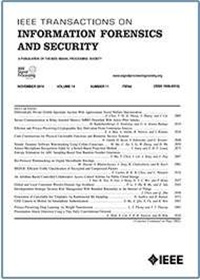Hypergraph-Driven Anomaly Detection in Dynamic Noisy Graphs
IF 8
1区 计算机科学
Q1 COMPUTER SCIENCE, THEORY & METHODS
IEEE Transactions on Information Forensics and Security
Pub Date : 2025-09-15
DOI:10.1109/TIFS.2025.3610063
引用次数: 0
Abstract
As interactions among elements in applications such as social networks, transaction networks, and IP-IP networks dynamically evolve, anomaly detection in dynamic graphs to mitigate potentially threatening interactions has become increasingly important. Existing methods often assume noise-free graph structures and primarily focus on monitoring structural changes to discover anomalies. Regrettably, practical applications often involve inaccurate information, individual non-response and dropout, and sampling biases. These factors contribute to the pervasiveness of dynamic noisy graphs that encompass structural noises, making anomaly detection more challenging. To address this issue, we propose a novel Hypergraph-driven Anomaly Detection Framework (HADF), which resists the interference of structural noises and adapts to dynamic noisy graphs. HADF consists of a hyper encoder and an embedding enhancer. The hyper encoder leverages inter-edge correlations to generate hyperedges and design their resistant weights, further employing hypergraph convolutional layers to extract the basic hyper-embeddings of edges. The embedding enhancer exploits temporal structural correlation and reconstructs multi-head attention to achieve noise-resistant enhancement of basic hyper-embeddings. Extensive experiments show that our proposed HADF can realize resistance to structural noises and outperform state-of-the-art methods in identifying anomalous edges in dynamic noisy graphs.动态噪声图中的超图驱动异常检测
随着应用程序(如社交网络、事务网络和IP-IP网络)中元素之间的交互动态发展,在动态图中进行异常检测以减轻潜在威胁交互变得越来越重要。现有的方法通常采用无噪声的图结构,主要集中在监测结构变化以发现异常。遗憾的是,实际应用往往涉及不准确的信息,个人无反应和辍学,和抽样偏差。这些因素导致了包含结构噪声的动态噪声图的普遍性,使异常检测更具挑战性。为了解决这个问题,我们提出了一种新的超图驱动异常检测框架(HADF),该框架可以抵抗结构噪声的干扰,并适应动态噪声图。HADF由一个超编码器和一个嵌入增强器组成。超编码器利用边缘间的相关性来生成超边缘并设计它们的抗权值,进一步使用超图卷积层来提取边缘的基本超嵌入。该嵌入增强器利用时间结构相关性,重构多头注意力,实现基本超嵌入的抗噪声增强。大量的实验表明,我们提出的HADF可以实现对结构噪声的抵抗,并且在识别动态噪声图中的异常边缘方面优于最先进的方法。
本文章由计算机程序翻译,如有差异,请以英文原文为准。
求助全文
约1分钟内获得全文
求助全文
来源期刊

IEEE Transactions on Information Forensics and Security
工程技术-工程:电子与电气
CiteScore
14.40
自引率
7.40%
发文量
234
审稿时长
6.5 months
期刊介绍:
The IEEE Transactions on Information Forensics and Security covers the sciences, technologies, and applications relating to information forensics, information security, biometrics, surveillance and systems applications that incorporate these features
 求助内容:
求助内容: 应助结果提醒方式:
应助结果提醒方式:


